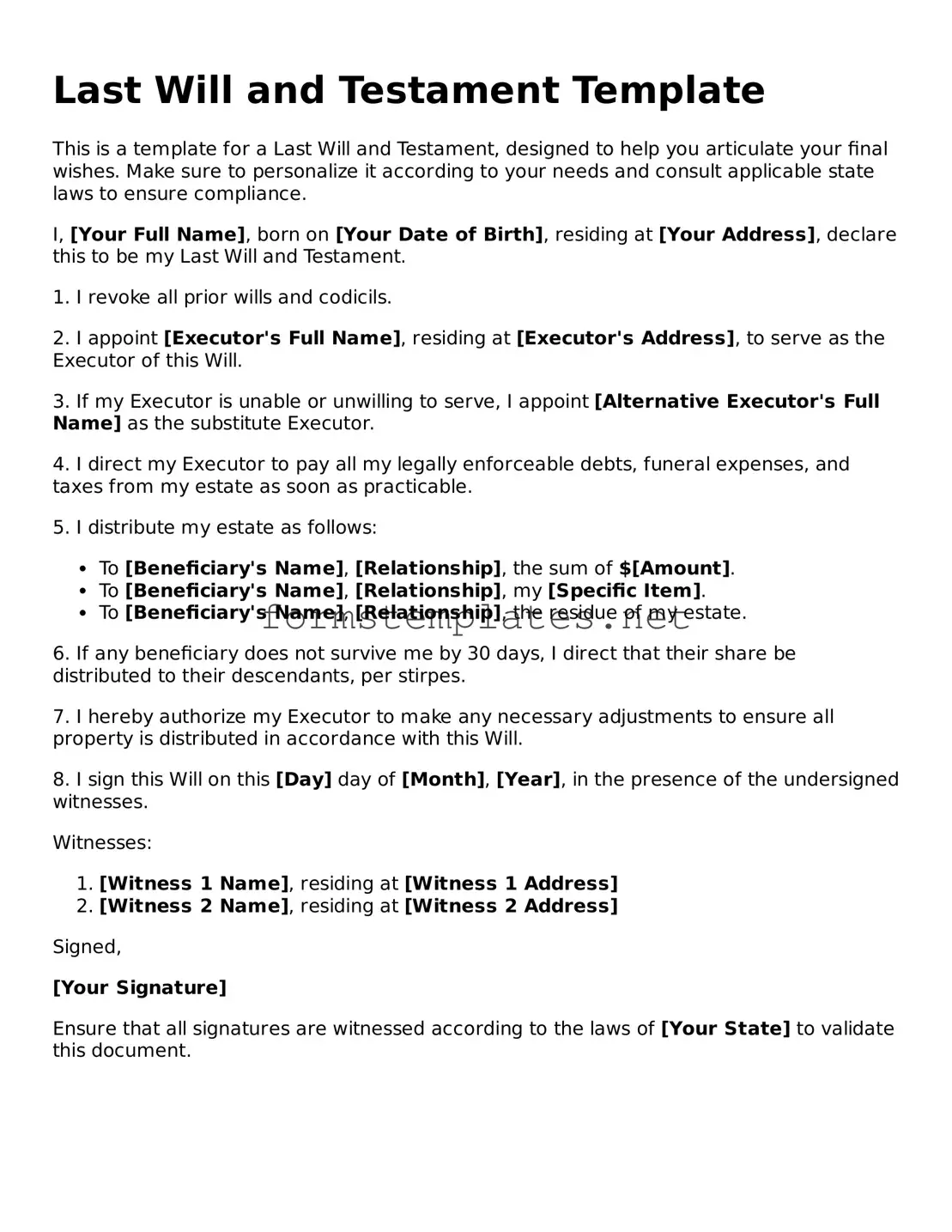Last Will and Testament Template
This is a template for a Last Will and Testament, designed to help you articulate your final wishes. Make sure to personalize it according to your needs and consult applicable state laws to ensure compliance.
I, [Your Full Name], born on [Your Date of Birth], residing at [Your Address], declare this to be my Last Will and Testament.
1. I revoke all prior wills and codicils.
2. I appoint [Executor's Full Name], residing at [Executor's Address], to serve as the Executor of this Will.
3. If my Executor is unable or unwilling to serve, I appoint [Alternative Executor's Full Name] as the substitute Executor.
4. I direct my Executor to pay all my legally enforceable debts, funeral expenses, and taxes from my estate as soon as practicable.
5. I distribute my estate as follows:
- To [Beneficiary's Name], [Relationship], the sum of $[Amount].
- To [Beneficiary's Name], [Relationship], my [Specific Item].
- To [Beneficiary's Name], [Relationship], the residue of my estate.
6. If any beneficiary does not survive me by 30 days, I direct that their share be distributed to their descendants, per stirpes.
7. I hereby authorize my Executor to make any necessary adjustments to ensure all property is distributed in accordance with this Will.
8. I sign this Will on this [Day] day of [Month], [Year], in the presence of the undersigned witnesses.
Witnesses:
- [Witness 1 Name], residing at [Witness 1 Address]
- [Witness 2 Name], residing at [Witness 2 Address]
Signed,
[Your Signature]
Ensure that all signatures are witnessed according to the laws of [Your State] to validate this document.
